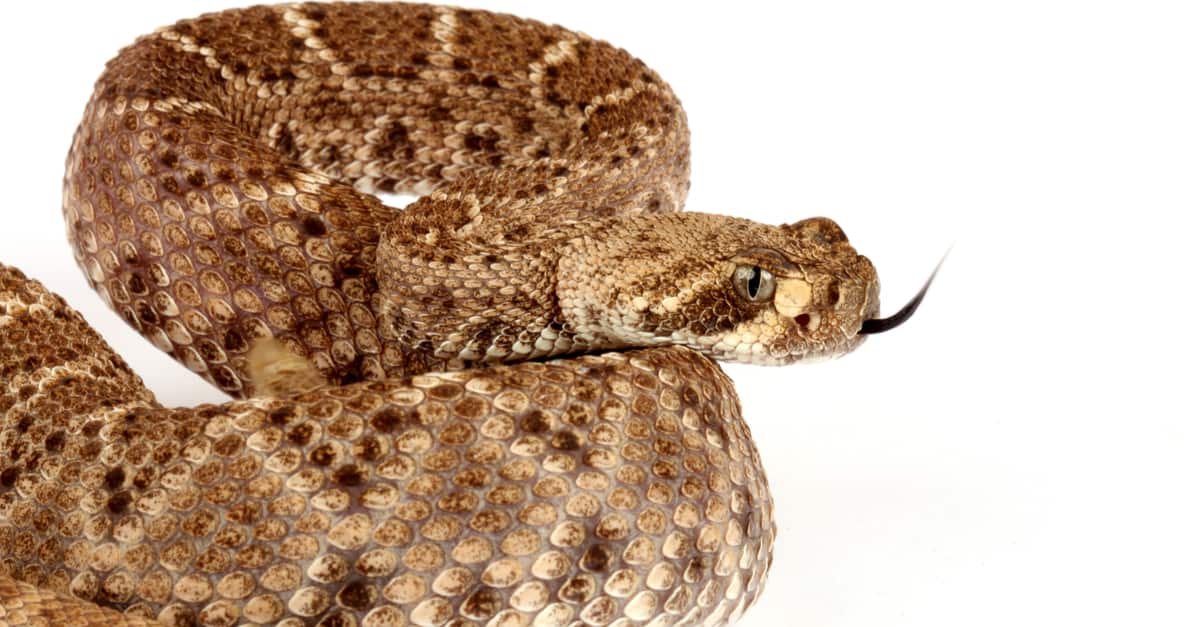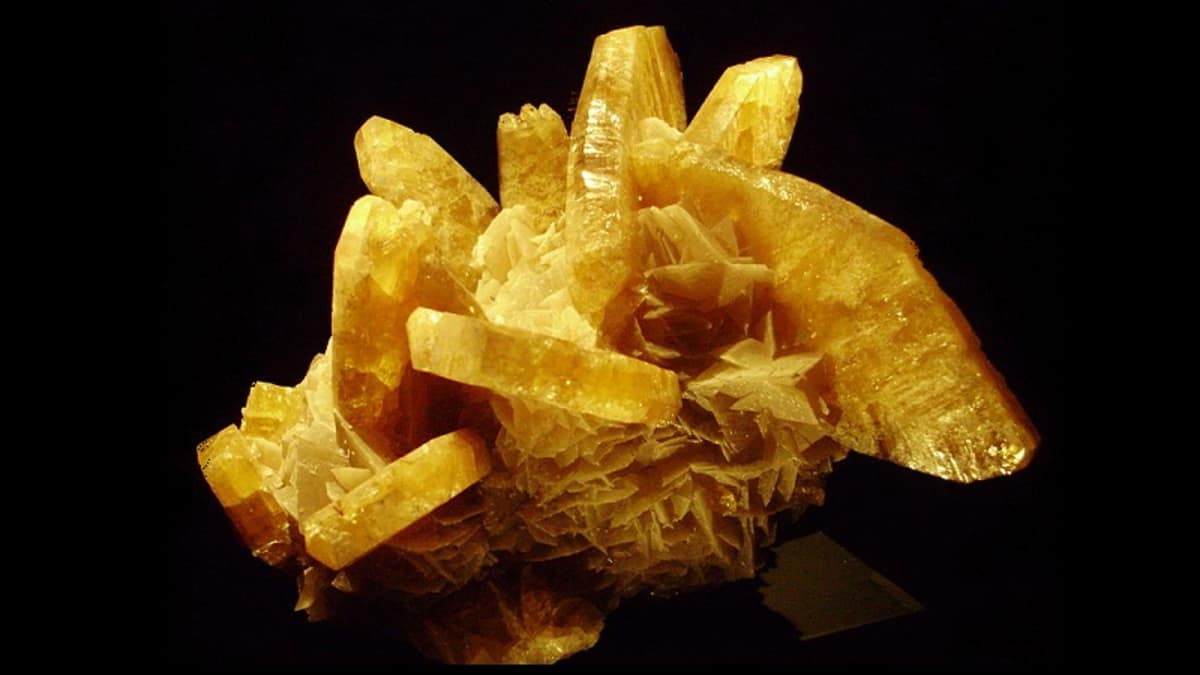
The Western Diamondback Rattlesnake, scientifically known as Crotalus atrox, is one of the most fascinating and fearsome creatures found in North America. With its distinctive diamond-shaped patterns and the iconic rattle on its tail, this venomous snake has captured the imagination of people for centuries.
In this article, we will explore 18 astonishing facts about the Western Diamondback Rattlesnake that will leave you in awe of its incredible abilities and survival strategies. From its remarkable adaptations to its potent venom, this snake has evolved to thrive in the harsh environments of the American Southwest and beyond.
So, get ready to uncover the secrets of one of nature’s most formidable predators as we dive into the captivating world of the Western Diamondback Rattlesnake.
Key Takeaways:
- The Western Diamondback Rattlesnake is a large, venomous snake with a diamond pattern on its back. It plays a vital role in controlling rodent populations and has a unique warning system with its rattles.
- These snakes are fascinating creatures that live in the American Southwest. They have specialized heat-sensing pits, can strike with incredible speed, and give birth to live young. It’s important to respect and conserve their habitat.
The Western Diamondback Rattlesnake is a venomous pit viper.
The Western Diamondback Rattlesnake, also known as Crotalus atrox, is a highly venomous pit viper species found in the southwestern United States and Mexico. Its distinctive feature is the rattle at the end of its tail, which it uses to warn potential threats.
It is one of the largest rattlesnake species.
The Western Diamondback can grow up to 4 to 5 feet in length, making it one of the largest rattlesnake species in North America.
The Western Diamondback Rattlesnake has a unique diamond pattern.
As its name suggests, the Western Diamondback has a diamond-shaped pattern along its back, composed of dark diamonds outlined by lighter scales.
Their venom can be deadly.
The venom of the Western Diamondback Rattlesnake contains potent toxins that can be deadly to their prey and potentially dangerous to humans. Prompt medical attention is crucial in case of a snakebite.
They are ambush predators.
The Western Diamondback Rattlesnake is an ambush predator, relying on its excellent camouflage to blend into its surroundings and ambush unsuspecting prey.
They have specialized heat-sensing pits.
These rattlesnakes possess specialized heat-sensing pits located between their eyes and nostrils, allowing them to detect warm-blooded prey, even in complete darkness.
They primarily feed on rodents.
The Western Diamondback Rattlesnake primarily feeds on small mammals, such as mice, rats, rabbits, and ground squirrels. Their venom immobilizes the prey, allowing the snake to consume it whole.
They play a vital role in the ecosystem.
Despite their fearsome reputation, Western Diamondbacks play an essential role in controlling rodent populations, helping to maintain balance in the ecosystem.
They have excellent camouflage.
Their scale colors and patterns help them blend into their surroundings, making them difficult to spot, even in rocky desert landscapes. This camouflage is crucial for both hunting and avoiding predators.
Western Diamondback Rattlesnakes can strike with incredible speed.
When threatened, the Western Diamondback can strike with lightning-fast speed, delivering a potent, venomous bite to defend itself.
They use their rattles as a warning sign.
The rattling sound produced by their specialized tail rattles serves as a warning to potential threats, signaling them to stay away. It is a unique adaptation among rattlesnakes.
Western Diamondbacks undergo seasonal hibernation.
During colder months, these snakes enter a state of hibernation to conserve energy. They seek out dens or other suitable locations to spend the winter.
They shed their skin regularly.
Like other snakes, Western Diamondbacks shed their skin periodically. This process helps them grow, remove parasites, and maintain their health.
They have a long lifespan.
Western Diamondbacks have a relatively long lifespan compared to other snakes, with some individuals living up to 20 years in the wild.
They are found in a variety of habitats.
These rattlesnakes can thrive in diverse habitats, including deserts, grasslands, rocky slopes, and even forests, as long as there is suitable cover and prey availability.
Female Western Diamondbacks give live birth.
Unlike some reptiles, Western Diamondbacks are viviparous, meaning the females give birth to live young rather than laying eggs. They can give birth to a litter of up to 25 baby rattlesnakes.
Their population faces threats.
Due to habitat loss, illegal collection, and killing by humans, the population of Western Diamondback Rattlesnakes is facing significant threats. Conservation efforts are crucial to protect this species.
They are a symbol of the American Southwest.
The Western Diamondback Rattlesnake holds cultural significance and symbolizes the unique wildlife of the American Southwest. It serves as a constant reminder of the beauty and diversity of this region.
These 18 astonishing facts about Western Diamondback Rattlesnakes highlight the fascinating characteristics and importance of this unique species. From their venomous nature and remarkable adaptations to their role in the ecosystem, these snakes are truly awe-inspiring. It is crucial to appreciate and respect these creatures while also promoting their conservation.
Remember, encountering a Western Diamondback Rattlesnake in the wild can be dangerous, and it is essential to give them their space and observe from a safe distance. By understanding and appreciating these remarkable creatures, we can contribute to their preservation and the conservation of our natural world.
Conclusion
In conclusion, the Western Diamondback Rattlesnake is truly an astonishing creature with a wide range of fascinating characteristics. From their impressive size and venomous bite to their unique behavioral adaptations and vital role in the ecosystem, these snakes are truly a marvel of nature. Their distinct diamond-shaped patterns and menacing rattle make them easily identifiable, serving as a warning to potential predators and curious humans alike. By understanding and appreciating these remarkable serpents, we can contribute to their conservation and ensure their continued existence in our ecosystem for generations to come.
FAQs
Q: What is the average size of a Western Diamondback Rattlesnake?
A: Western Diamondback Rattlesnakes can grow to an average length of 3 to 4 feet, although larger specimens reaching up to 6 feet have been recorded.
Q: Are Western Diamondback Rattlesnakes venomous?
A: Yes, Western Diamondback Rattlesnakes are venomous. Their venom contains toxins that can immobilize and begin to digest their prey, making them a formidable predator in their habitat.
Q: Do Western Diamondback Rattlesnakes make rattling noises?
A: Yes, Western Diamondback Rattlesnakes have a unique rattle at the end of their tail which they vibrate to produce a buzzing sound when they feel threatened or disturbed.
Q: What do Western Diamondback Rattlesnakes eat?
A: Western Diamondback Rattlesnakes primarily feed on small mammals like rodents, rabbits, and birds. They are well adapted to hunting and consuming their prey whole.
Q: Are Western Diamondback Rattlesnakes aggressive towards humans?
A: While Western Diamondback Rattlesnakes generally avoid confrontation with humans, they can become defensive and strike if provoked or threatened. It’s important to give them their space and treat them with caution and respect.
If you're fascinated by the Western Diamondback Rattlesnake, why not explore more captivating facts about the world of reptiles-and-amphibians/">herpetology? Discover the incredible diversity of reptiles, from scaly lizards to mighty crocodiles. Dive deeper into the secrets of rattlesnakes, learning about their unique adaptations and behaviors. Whether you're a budding herpetologist or simply curious about these amazing creatures, there's always more to uncover in the realm of reptiles and amphibians.
Was this page helpful?
Our commitment to delivering trustworthy and engaging content is at the heart of what we do. Each fact on our site is contributed by real users like you, bringing a wealth of diverse insights and information. To ensure the highest standards of accuracy and reliability, our dedicated editors meticulously review each submission. This process guarantees that the facts we share are not only fascinating but also credible. Trust in our commitment to quality and authenticity as you explore and learn with us.


